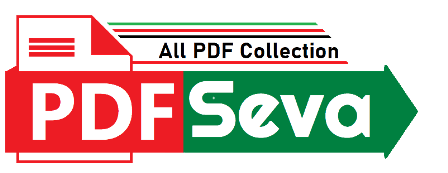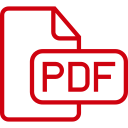
ad here
811 Download
1 year ago
Types of Computer in PDF Free Download, 10 types of computer pdf, what are the 4 types of computer pdf, 4 types of computers, types of computer assignment, 5 types of computer, history and types of computer pdf, types of computers and examples, how many types of computer.
A computer is a machine that can be programmed to perform arithmetic or logical operations automatically. Computers power the Internet and connect billions of other computers and users. Early computers were meant for calculations, but later, more sophisticated electrical machines automate tasks. The speed, power, and versatility of computers have increased dramatically since then, leading to the Digital Revolution during the late 20th to early 21st centuries. A modern computer consists of at least one processing element, typically a central processing unit (CPU) in the form of a microprocessor, along with some type of computer memory, typically semiconductor memory chips.
Computers can be classified into various types, including analog, digital, hybrid, Harvard, and Von Neumann architectures. The Torpedo Data Computer, developed by the US Navy in 1938, was the first fully automatic, digital (electromechanical) computer. Early digital computers were electromechanical, with electric switches driving mechanical relays. The term “Harvard architecture” was coined decades later, in the context of microcontroller design, and only applied to Harvard machines and RISC microprocessors with separated caches. The “Harvard” and “von Neumann” architectures are often seen as a dichotomy, but modern processors are actually systems with von Neumann architectures, with program code stored in the same main memory as data. The modified Harvard architecture is split into two address spaces, while the von Neumann architecture, also known as the von Neumann model or Princeton architecture, is a computer architecture based on a 1945 description by John von Neumann. Supercomputers are computers with high performance, measured in floating-point operations per second (FLOPS), and are used for computationally intensive tasks in fields such as quantum mechanics, weather forecasting, climate research, oil and gas exploration, molecular modeling, and physical simulations. Additional research is being conducted in the United States, the European Union, Taiwan, Japan, and China to build faster, more powerful, and technologically superior exascale supercomputers.
The Ishango bone, a bone tool dating back to prehistoric Africa, is an example of a device used for computation for thousands of years. The earliest counting device was likely a tally stick, and later record keeping aids included calculi, which represented counts of items. The Roman abacus, a Chinese suanpan, and the Antikythera mechanism are early analog computing devices. The Antikythera mechanism, discovered in 1901, is believed to be the earliest known mechanical analog computer. Other mechanical aids to calculation and measurement were constructed for astronomical and navigation use, such as the planisphere, astrolabe, sector, planimeter, slide rule, and mechanical doll. The slide rule was invented around 1620-1630 by William Oughtred, and its development continued with scales for various functions, such as logarithms and exponentials. The E6B circular slide rule is still used for routine calculations on light aircraft.Giovanni Plana, a mathematician and engineer, invented the Perpetual Calendar machine in 1831, which predicted the perpetual calendar for every year from 0 CE to 4000 CE. Sir William Thomson’s tide-predicting machine in 1872 was useful for navigation in shallow waters. Vannevar Bush and others developed mechanical differential analyzers in the 1920s. He realized that an analytical engine could be created, with input from punched cards and output from a printer, curve plotter, and bell.
The engine incorporated an arithmetic logic unit, control flow, and integrated memory, making it the first Turing-complete general-purpose computer. Despite its success, the project was dissolved due to political and financial difficulties. Henry Babbage completed a simplified version of the analytical engine’s computing unit in 1888 and demonstrated its use in computing tables in 1906. Spanish engineer Leonardo Torres Quevedo designed an electromechanical calculating machine, inspired by Babbage, which was controlled by a read-only program and featured floating-point arithmetic. In 1920, Torres presented the Electromechanical Arithmometer, which connected an arithmetic unit to a typewriter for automatic printing. The differential analyzer, a mechanical analog computer designed to solve differential equations by integration using wheel-and-disc mechanisms, reached its zenith with the differential analyzer, built by H. L. Hazen and Vannevar Bush at MIT in 1927.
Electromechanical computers, such as the Torpedo Data Computer, were developed by the United States Navy in 1938. Konrad Zuse’s Z3, the first fully automatic, digital (electromechanical) computer, was built in 1941 and became the world’s first working electromechanical programmable, fully automatic digital computer. The Z3 was built with 2000 relays and a 22-bit word length, and its binary system made it easier to build and potentially more reliable. The Z4 became the world’s first commercial computer, completed in 1950 and delivered to the ETH Zurich. In 1934, experimental equipment was built to convert a portion of the telephone exchange network into an electronic data processing system using thousands of vacuum tubes. In 1942, John Vincent Atanasoff and Clifford E. Berry developed the Atanasoff–Berry Computer, the first “automatic electronic digital computer” in the US. The Colossus used a large number of valves and paper-tape input, but was not Turing-complete. The ENIAC, the first electronic, Turing-complete device, performed ballistics trajectory calculations for the United States Army. The modern computer concept was proposed by Alan Turing in his 1936 paper, On Computable Numbers, which proposed a simple device called the “Universal Computing machine.”
| PDF Name: | types-of-cmp |
| Author : | Pdf Plus |
| File Size : | 2 MB |
| PDF View : | 59 Total |
| Downloads : | 📥 Free Downloads |
| Details : | Free PDF for Best High Quality types-of-cmp to Personalize Your Phone. |
| File Info: | This Page PDF Free Download, View, Read Online And Download / Print This File File At PDFSeva.com |
Copyright/DMCA: We DO NOT own any copyrights of this PDF File. This Types of Computer in PDF Free Download was either uploaded by our users @Pdf Plus or it must be readily available on various places on public domains and in fair use format. as FREE download. Use For education proposal. If you want this Types of Computer in to be removed or if it is copyright infringement, do drop us an email at [email protected] and this will be taken down within 24 hours!
© PDFSeva.com : Official PDF Site : All rights reserved
